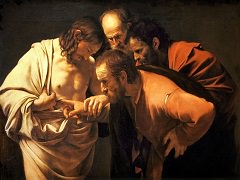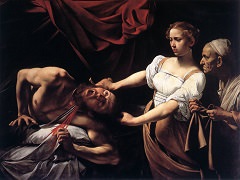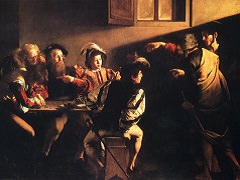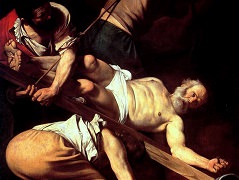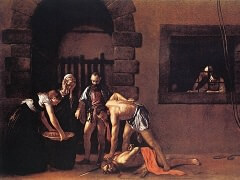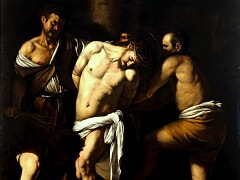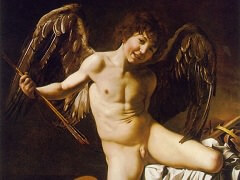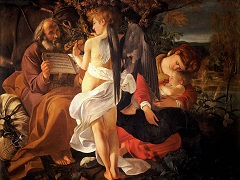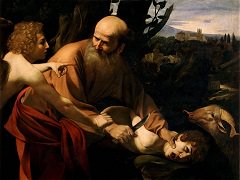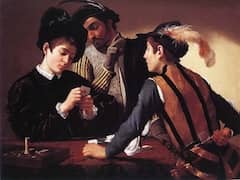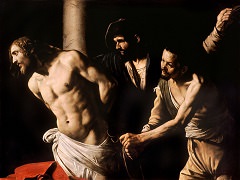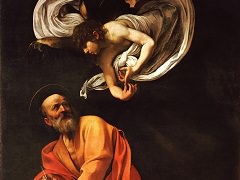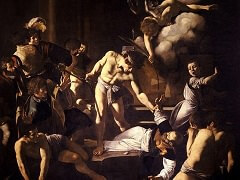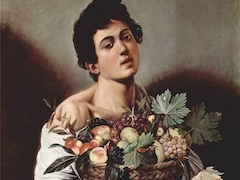Saint Matthew and the Angel, 1602 by Caravaggio
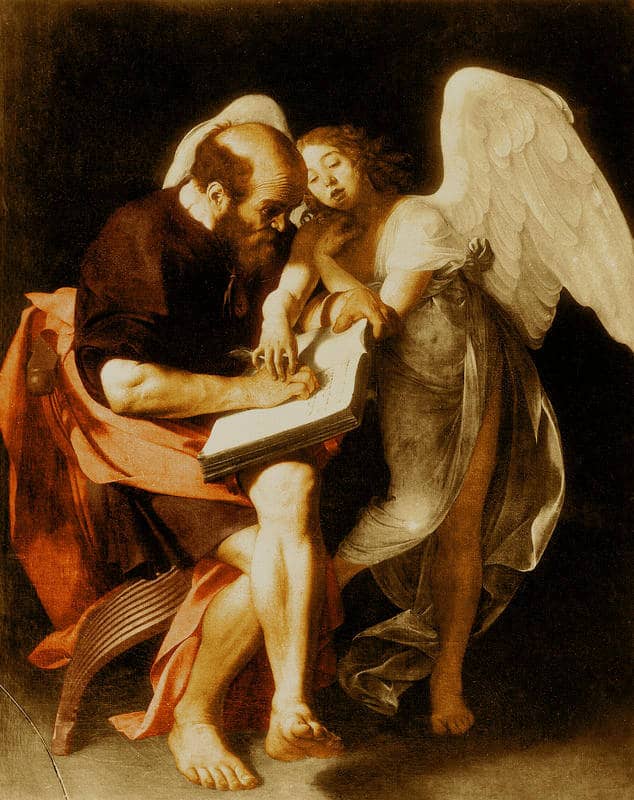
In this painting, the line at the bottom left is due to a crack in the photographic plate. At the time of Caravaggio's commission for the two lateral paintings the commission for the altarpiece still belonged to the mediocre and extremely old Flemish sculptor, Jacob Cobaert; but apparently his work was so poorly executed that it was rejected as soon as it was placed in situ, although it was then still unfinished, and a contract made on 7 February 1602 with Caravaggio, this time by Giacomo Crescenzi, for a painted altarpiece instead. The discovery of this document has proved perplexing to scholars since it had previously been thought that the style of this picture, with its three-dimensionality and solid modelling, was close to that of at least two or three years earlier. Yet the precise chronology of Caravaggio's pictures is still a legitimate subject for debate, and the sculptural quality and foreshortening in this work do not seem so very far from the National Gallery Supper at Emmaus which many scholars now place rather late 1602/03 according to the National Gallery catalogue.
Furthermore, it is possible, as Salerno has suggested, that Caravaggio sought to give his picture a particularly sculptural appearance in an attempt to create a powerful substitute for Cobaert's rejected piece. At all events, the picture, like the sculpture, was, in its turn, rejected, although this time for moral and religious rather than aesthetic reasons. Bellori says that the clergy considered that it lacked 'decorum', and objected to the saint's crossed legs and prominent feet, but it almost certainly had as much to do with the erotic character of the angel, in such close proximity to St. Matthew himself. Caravaggio's friend and patron, the Marchese Vincenzo Giustiniani, purchased the rejected work and probably had it cut down in size to accommodate it to his own private picture gallery.
It is noteworthy that the cross-legged pose of the saint is strongly reminiscent of that in a picture of c. 1521 of the same subject by Caravaggio's north Italian predecessor, the Brescian artist Romanino (Brescia, Church of San Giovanni Evangelista).

